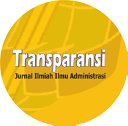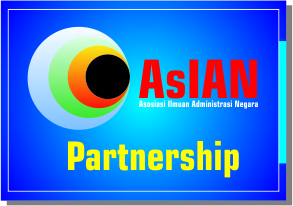Peran Proses Pengadaan dan Kontrak dalam Rancang Bangun Operasional Teknologi Informasi Bank Sentral Melalui Sistem Outsourcing SDM
DOI:
https://doi.org/10.31334/trans.v6i2.38Keywords:
Outsourcing, Information Technology, Structural Equation Modeling, Human Resources Policies.Abstract
The role of outsourcing is very strategic, therefore we needs to have an outsourcing system to optimally support the Information Technology (IT) services that are drived from and integrated with information system and business strategy. The objective of this research is to formulate a model of development of IT services through outsourcing system. This model expected to assist the management in making strategic Human Resources (HR) Policies in line with the institutional strategy and business. The specific objectives of research: analyzing the dominant factors affecting the development of IT services through outsourcing system; analyzing the relations between such factors with the outsourcing success to achieve prime services; analyzing the model forms of development; and producing the model of development. This Case study was conducted in BI, by applying the approach of integrated explorative, descriptive and explanatory researches, analysis for endogen and exogen variables by applying Structural Equation Modeling (SEM). Policy model was formulated based upon the SEM analysis’s result, then some verification and validation were done through Individual Depth Interview (IDI) and Focus Group Discussion (FGD). This study indicated that the key success factors of outsourcing system in supporting IT services are: (1). capability with indicators quality technical personnel, product efficiency, technical process, process management, quality control, service quality and project management; (2). procurement process with indicators: service quality, competition, cost, cooperation, and froud act; (3). contract with indicators: incentive, penalty, trust, preventing froud act, and cooperation; (4). outsourcing implementation with indicators: cooperation, sustainable expectation, partnership, investment intention, commitment and power client. But In this case, how ever focus analysis on: (1). procurement process with indicators: service quality, competition, cost, cooperation, and froud act; (2). contract with indicators: incentive, penalty, trust, preventing froud act, and cooperation:References
Cooper RD. and SS. Pamela. 2006, Business Research Methods, New York: Mc Graw Hill.
Eriyatno dan F Sofyar. 2007. Riset Kebijakan. Bogor: Penerbit IPB Pres.
Gottschalk P and SS Hans, 2005. Critical Success Factors From IT Outsourcing Theorities: An Empirical Study, Journal, Norwegian School Of Management, Oslo, Norway.
Halvey KJ and MM Barbara. 1996. Information Technology Outsourcing Transactions Process, Strategies, and Contracts. Singapore: John Wiley & Sons.
Klepper R, O Jones and Wendell. 1997. Outsourcing Information Technology, Systems & Services. Singapore: Simon&Schuster Asia Pte.Ltd.
Kusnendi. 2008. Model-Model Persamaan Struktural, Bandung: Penerbit Alfabeta.
Lee Jae-Nam, QHuynh and HR Minh. 2008. An Integrative Model Of Trust On IT Outsourcing: Examining A Bilateral Perspective, Journal, Korea University Business School, South Korea, Southeastern Louisiana University, LA, USA.
Lin Chad, P Graham, MD Donald. 2007. Issues And Recomendations In Evaluating And Managing The Benefits Of Public Sector IS/IT Outsourcing, Journal, Edith Cowan University, Joondalup, Australia, Curtin University of Technology, Perth, Australia.
Mangkuprawira, S. 2003. Manajemen Sumber Daya Manusia Strategik. Jakarta: PT. Ghalia Indonesia.
Starkey, K. and A McKinlay. 1997. Corporate Strategy and The Human Resource. New Delhi: Beacon Books.
Sun Yi. 2005. Organizational Strategy And IT Outsourcing: A Perspective Of Miles And Snow’s Strategic Typologies, For Degree Of Master Of Science IN Administration, Concordia University, Montreal, Quebec, Canada.
Swinarski EM. 2003. Service Excellence in Outsourcing IT Service: The Role Of Relational Governance Mechanisms and Provider Capabilities, Dissertation, University of New York at Buffalo, New York.
Tarafdar M and DV. Sanjiv. 2007. Information Technology Adoption And Role Of Organizational Readiness: The Case of an Indian Bank, Journal, University of Toledo, USA, Indian Institute Of Management, India.
Whitten DG. 2004. The Application Development Outsourcing Contract Decision: The Effect Of Service Quality, Relationship Quality, Satisfaction, and Switching Costs on Continuation and Discontinuation Decisions, Dissertation, Louisiana Tech University, Louisiana.
Willcocks PL, Feeny David, 2006. IT Outsourcing and Core is Capabilities: Challenges and Lessons at Dupont, Journal, Information System Management (http://www.ism.journal.com, diakses pada 26 Juli 2009)
Wright Christ. 2006. IT Project Management, Global Knowledge Network, Inc, North Carolina, USA.
Ye Fei. 2005. Strategic IT Partnerships in Transformational Outsourcing As A Distinctive Source Of IT Value: A Social Perspective, Dissertation, University Of Maryland, Maryland.
Downloads
Published
Issue
Section
License

This work is licensed under a Creative Commons Attribution-ShareAlike 4.0 International License
Please find the rights and licenses in Transparansi : Jurnal Ilmiah Ilmu Administrasi By submitting the article/manuscript of the article, the author(s) agree with this policy. No specific document sign-off is required.
- License
The commercial use of the article will be governed by the Creative Commons Attribution license as currently displayed on Creative Commons Attribution-ShareAlike 4.0 International License.
2. Author(s)' Warranties
The author warrants that the article is original, written by stated author(s), has not been published before, contains no unlawful statements, does not infringe the rights of others, is subject to copyright that is vested exclusively in the author and free of any third party rights, and that any necessary written permissions to quote from other sources have been obtained by the author(s).
3. User Rights
Transparansi : Jurnal Ilmiah Ilmu Administrasi spirit is to disseminate articles published are as free as possible. Under the Creative Commons license, Transparansi : Jurnal Ilmiah Ilmu Administrasi permits users to copy, distribute, display, and perform the work for non-commercial purposes only. Users will also need to attribute authors and Transparansi : Jurnal Ilmiah Ilmu Administrasi on distributing works in the journal and other media of publications.
4. Co-Authorship
If the article was jointly prepared by more than one author, any authors submitting the manuscript warrants that he/she has been authorized by all co-authors to be agreed on this copyright and license notice (agreement) on their behalf, and agrees to inform his/her co-authors of the terms of this policy. Transparansi : Jurnal Ilmiah Ilmu Administrasi will not be held liable for anything that may arise due to the author(s) internal dispute. Transparansi : Jurnal Ilmiah Ilmu Administrasi will only communicate with the corresponding author.
5. Miscellaneous
Transparansi : Jurnal Ilmiah Ilmu Administrasi will publish the article (or have it published) in the journal if the article’s editorial process is successfully completed. Transparansi : Jurnal Ilmiah Ilmu Administrasi editors may modify the article to a style of punctuation, spelling, capitalization, referencing and usage that deems appropriate. The author acknowledges that the article may be published so that it will be publicly accessible and such access will be free of charge for the readers as mentioned in point 3.
Every accepted manuscript should be accompanied by "Copyright Transfer Agreement"prior to the article publication.











